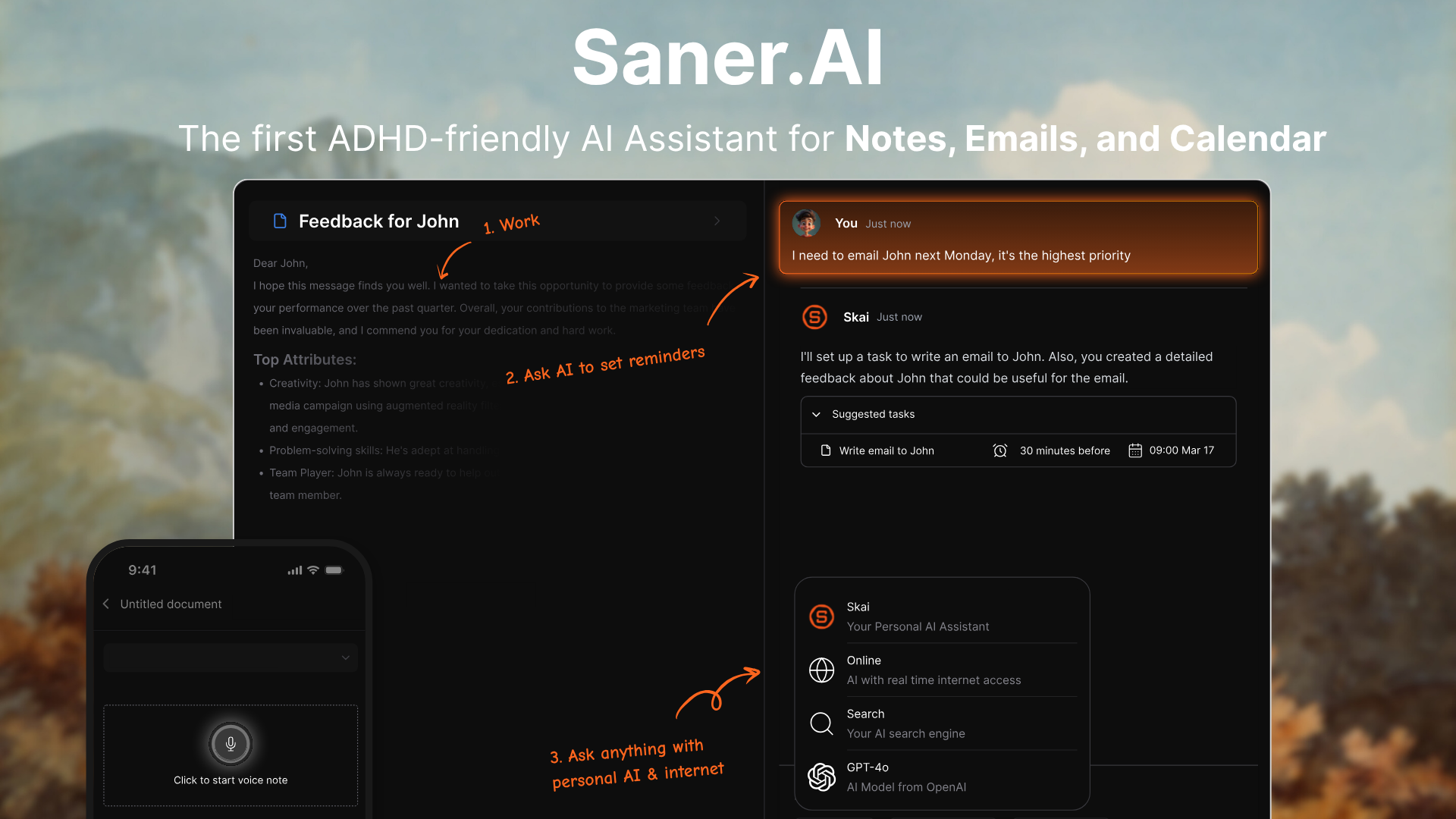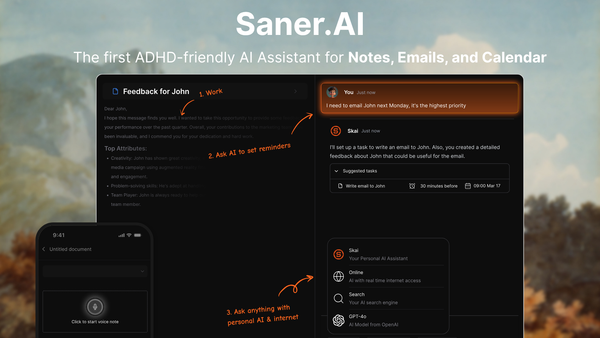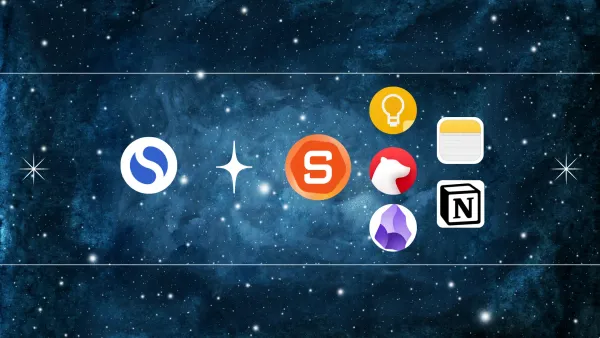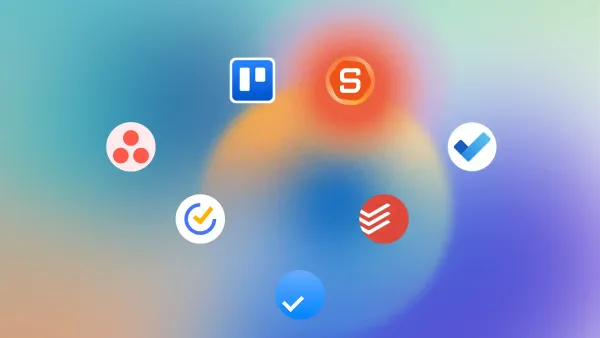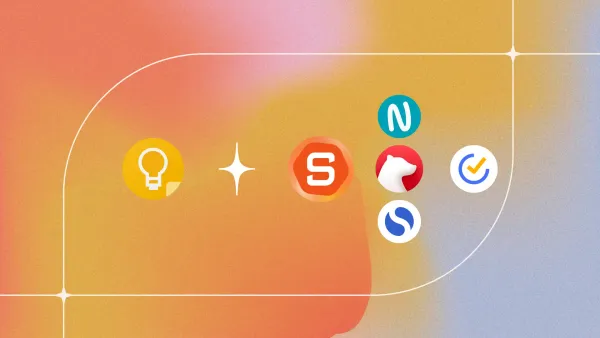Ruthless Prioritization: Practical Steps to Take Back Your Time and Focus

There’s no shortage of things asking for your attention. Emails, team pings, family texts, LinkedIn DMs, fire drills, "quick" syncs… oh, and somewhere in there, you’re supposed to build a company or move the needle at work.
That’s where ruthless prioritization comes in.
This isn’t your average to-do list tweak. Ruthless prioritization is the mindset (and skillset) of saying “yes” only to what truly matters - and letting everything else fall away.
In this guide, you’ll learn practical, real-world steps to cut through the noise, take control of your time, and finally feel in command of your day - not buried under it.
🤔 What Is Ruthless Prioritization?
Ruthless prioritization means deliberately and unapologetically focusing your energy on the few tasks that truly move the needle - and letting go of the rest.
It’s about:
- Saying no to good opportunities so you can say yes to the best ones
- Cutting 80% of your to-do list (and still performing better)
- Making peace with not doing it all - because you’re not supposed to
Short definition:
Ruthless prioritization is the practice of making hard, strategic decisions about what truly matters - and eliminating or delaying everything else.
⚠️ Why Is Ruthless Prioritization Important?
Failing to prioritize ruthlessly leads to:
- Burnout: When everything’s important, nothing is.
- Decision fatigue: You waste mental energy choosing between tasks instead of doing them.
- ABA Academies Study (Nov 2024): Notes that excessive choice can cause confusion and escalation of cognitive load; reducing options helps mitigate decision fatigue
- Missed opportunities: You spend time on reactive work and miss game-changing ones.
When you don’t prioritize ruthlessly, your day is decided by default, not by design.
🧠 What Frameworks Help With Ruthless Prioritization?
🗂 Summary: Top Prioritization Frameworks
| Framework | Core Idea | Best For |
|---|---|---|
| Eisenhower Matrix | Urgency vs Importance | Daily task sorting |
| Pareto Principle | 80/20 focus on high-output tasks | Strategic prioritization |
| Buffett’s 5/25 Rule | Top 5 goals only | Long-term focus |
1. Eisenhower Matrix: Urgency vs. Importance
“What is important is seldom urgent and what is urgent is seldom important.”
— Dwight D. Eisenhower
The Eisenhower Matrix helps you distinguish between reactive tasks that feel pressing and strategic ones that actually drive progress.
| Urgent | Not Urgent | |
|---|---|---|
| Important | ✅ Do now | 🗓️ Schedule (deep work zone) |
| Not Important | 🔁 Delegate or automate | ❌ Eliminate or ignore |
✅ How to use it:
- List every task you think you need to do today or this week.
- Sort tasks into quadrants:
- Urgent + Important: Critical tasks — do now.
- Not Urgent + Important: High-leverage tasks — plan for them.
- Urgent + Not Important: Distractions — delegate or automate.
- Not Urgent + Not Important: Time-wasters — eliminate.
- Prioritize quadrants 1 and 2 only. That’s where the impact lives.
📌 Real-world example:
- You're leading a product launch.
- Urgent & Important: Fix a critical bug blocking customers.
- Not Urgent & Important: Develop roadmap for Q4.
- Urgent & Not Important: Respond to 15 internal Slack messages.
- Not Urgent & Not Important: Tweak colors on a slide deck.
🧠 Why it works:
- Most people spend their day in Quadrant 3 (urgent but not important), putting out fires that look critical but don’t actually move the business forward.
- The magic happens in Quadrant 2: It’s where you write the strategy, plan ahead, and build long-term momentum.
2. Pareto Principle (80/20 Rule): Focus on the Vital Few
“80% of the results come from 20% of the efforts.”

Also known as the Law of the Vital Few, this principle is especially helpful when you’re overwhelmed with options or struggling to trim your to-do list.
🔍 How to apply it:
- Identify the outcomes you want: revenue, growth, team performance, etc.
- Ask: What 20% of tasks or inputs are generating 80% of these results?
- Focus ruthlessly on that 20%. Everything else is either delegated, delayed, or deleted.
💼 Real-world examples:
- Founder: Realizes that 80% of their startup’s revenue comes from just 3 enterprise clients — so they double down on upsells and support there.
- Marketer: Sees that one campaign drives 70% of email signups — so they optimize it instead of launching 5 new ones.
- Product Manager: Finds 2 features that deliver the bulk of user engagement — they reorient the roadmap accordingly.
🧠 Why it works:
- Most to-do lists are cluttered with equal-weighted tasks.
The 80/20 lens reweights your focus to where the actual leverage is. - Great for spotting hidden time-sinks — like spending 10 hours on admin work that creates zero strategic value.
⚠️ Watch out:
- The “trivial many” can feel satisfying (you’re checking off tasks!).
But real impact comes from the vital few.
3. Warren Buffett’s 5/25 Rule: Clarity Through Elimination
A powerful goal-setting exercise from the world’s most successful investor.
Here’s how Warren Buffett explained it to his pilot:

📝 Step-by-step:
- Write down your top 25 goals — for the year, your business, or your life.
- Circle your top 5.
- Avoid the other 20 like the plague.
Yes, really. Buffett calls those bottom 20 goals your biggest distractions — not because they’re bad, but because they’re tempting enough to take your focus off the few things that matter most.
🎯 Real-world use case:
- You’re an entrepreneur juggling:
- Launching a new product
- Speaking at a conference
- Building your YouTube presence
- Writing a book
- Mentoring a startup founder
- Learning Python
You circle:
- Launch product
- Close fundraising round
- Hire a technical cofounder
- Improve onboarding flow
- Double retention rate
Now, even if your book or YouTube channel sounds “fun,” you actively avoid those until the Top 5 are complete.
🧠 Why it works:
- We often fail not from lack of ambition, but from too many competing ambitions.
- This rule forces you to create hard boundaries, even around good ideas.
✨ Pro tip:
- This isn’t a “once and done” exercise. Revisit your 5/25 list every quarter — priorities evolve.
🔧 How Do You Practice Ruthless Prioritization Daily?
Let’s make this real. Here’s a daily ritual that puts ruthless prioritization into action:
✅ Step-by-step daily method:
- Dump your brain
- Write down everything you think you need to do today.
- Don’t filter — just unload.
- Circle what actually matters
- Circle 3 tasks that, if done, would make today successful.
- Use the 80/20 rule to decide.
- Cross out what doesn’t
- Be brutal. Some tasks are just… noise. Say no or delay.
- Time-block your day
- Schedule your top 3 tasks in your calendar.
- Leave space for unexpected stuff (aka real life).
- Let the rest go
- Write the other tasks in a “not today” list.
- It exists. You’re just not touching it today.
🧩 What Tools Can Help You Prioritize Better?
Saner.AI - Your ADHD-Friendly AI Assistant for Ruthless Prioritization

Best for: Entrepreneurs, knowledge workers, and ADHD-prone individuals juggling notes, emails, tasks, and chaos.
What it does:
Saner.AI is more than a to-do list - it’s your AI Personal Assistant. You can talk to it like a real assistant, and it will automatically:
- Extract action items from your messages, emails, notes, or scattered thoughts
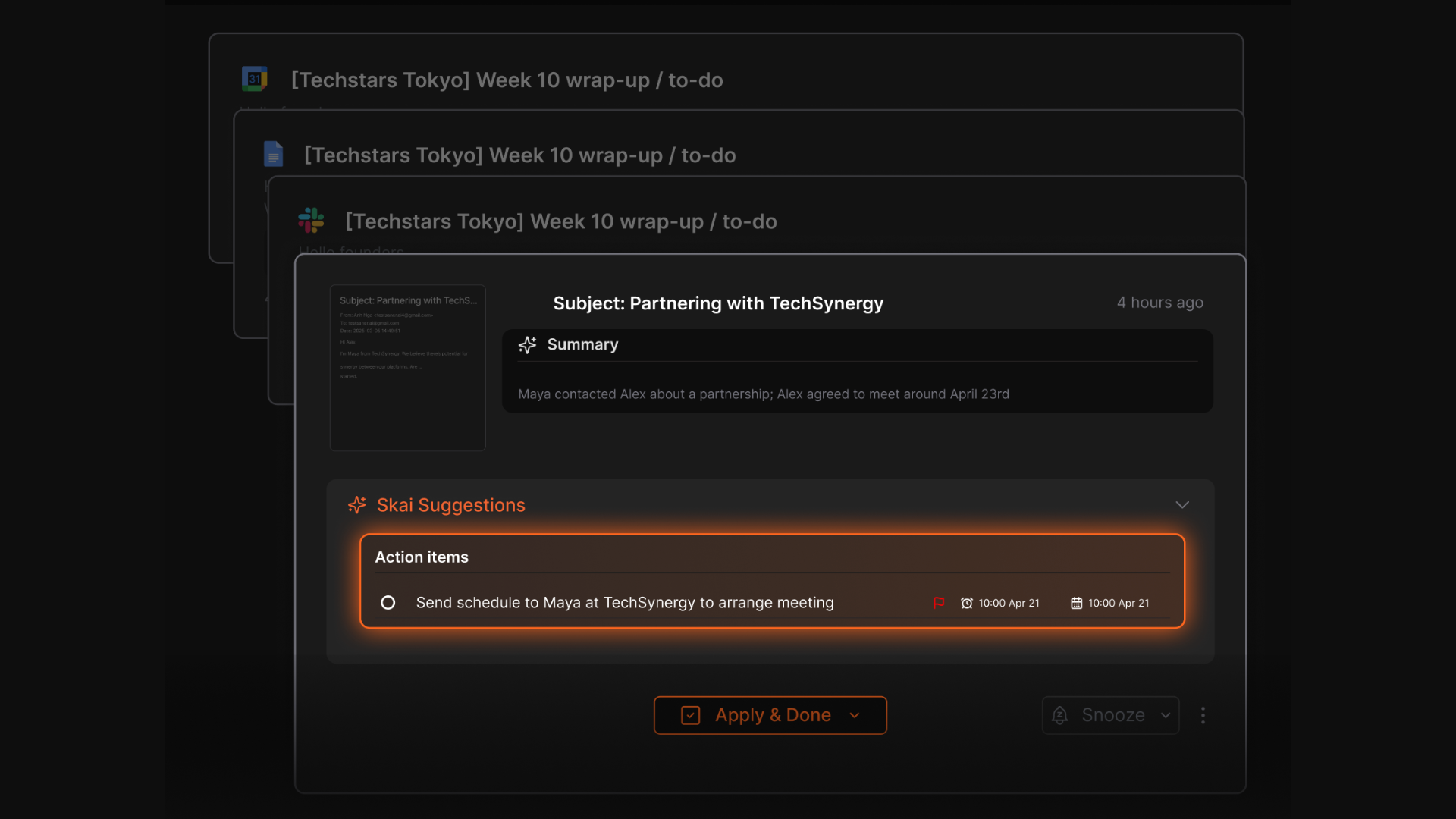
- Prioritize the tasks based on urgency and context
- Schedule tasks into your day
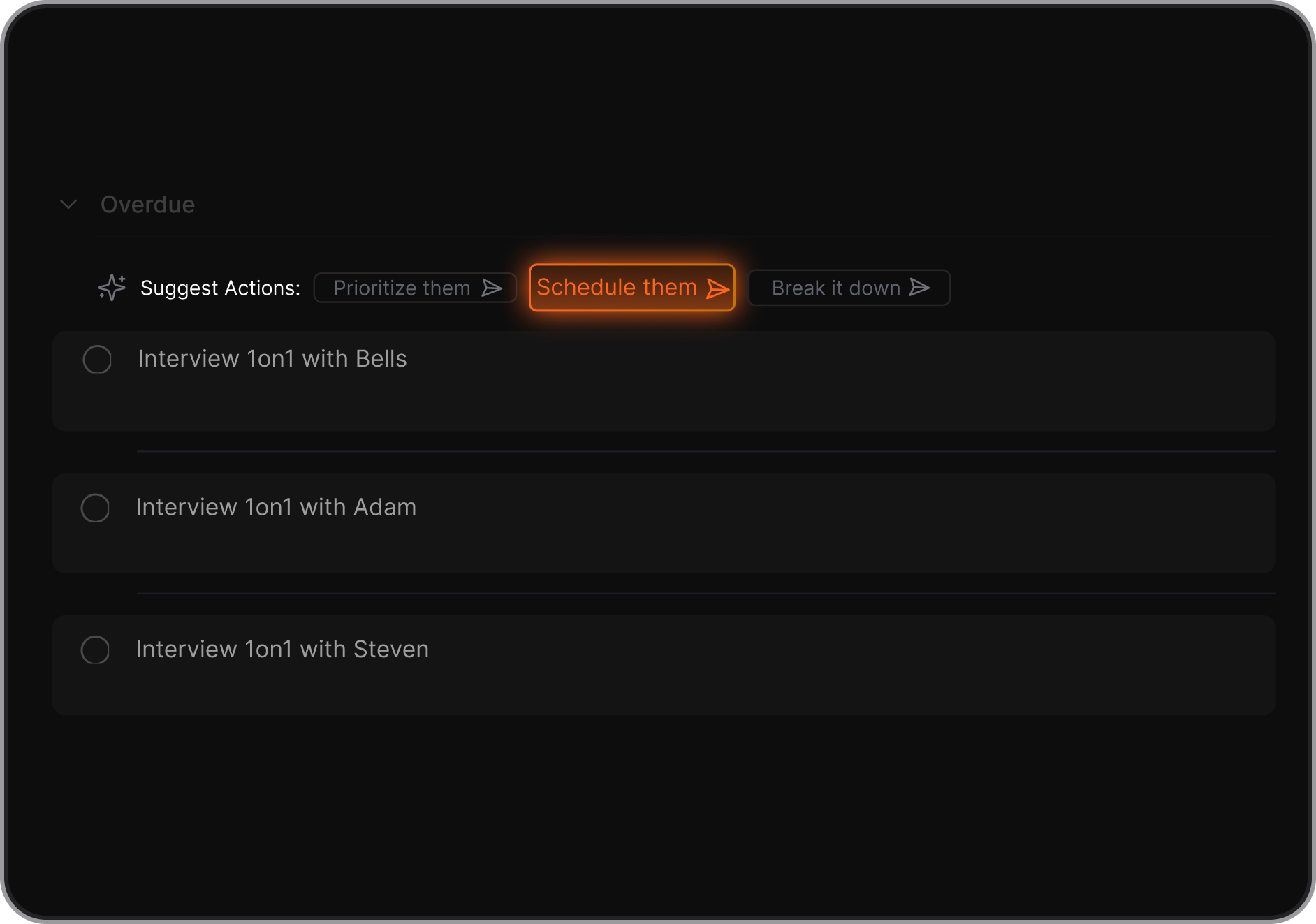
- Remind you at the right time
Key Features:
- 🗣️ Natural language input: Just say things like “ugh I still haven’t followed up with Alex or sent that contract” — and Saner will create and prioritize the task list for you.
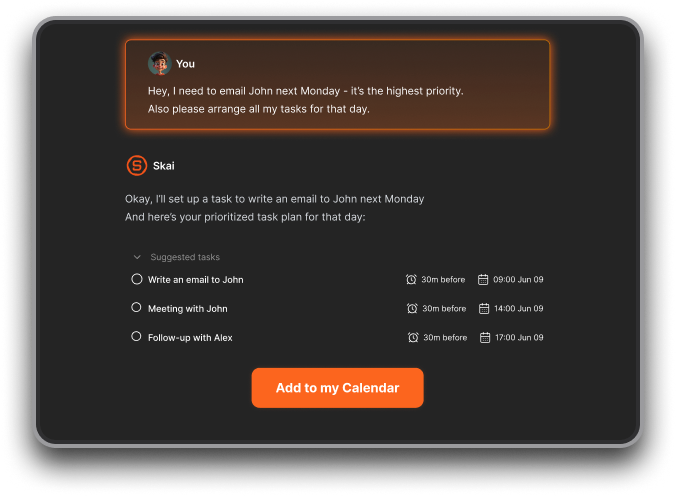
- 📥 Daily Active Planning: Every morning, Saner reads your emails, notes, todos and give you an optimal plan
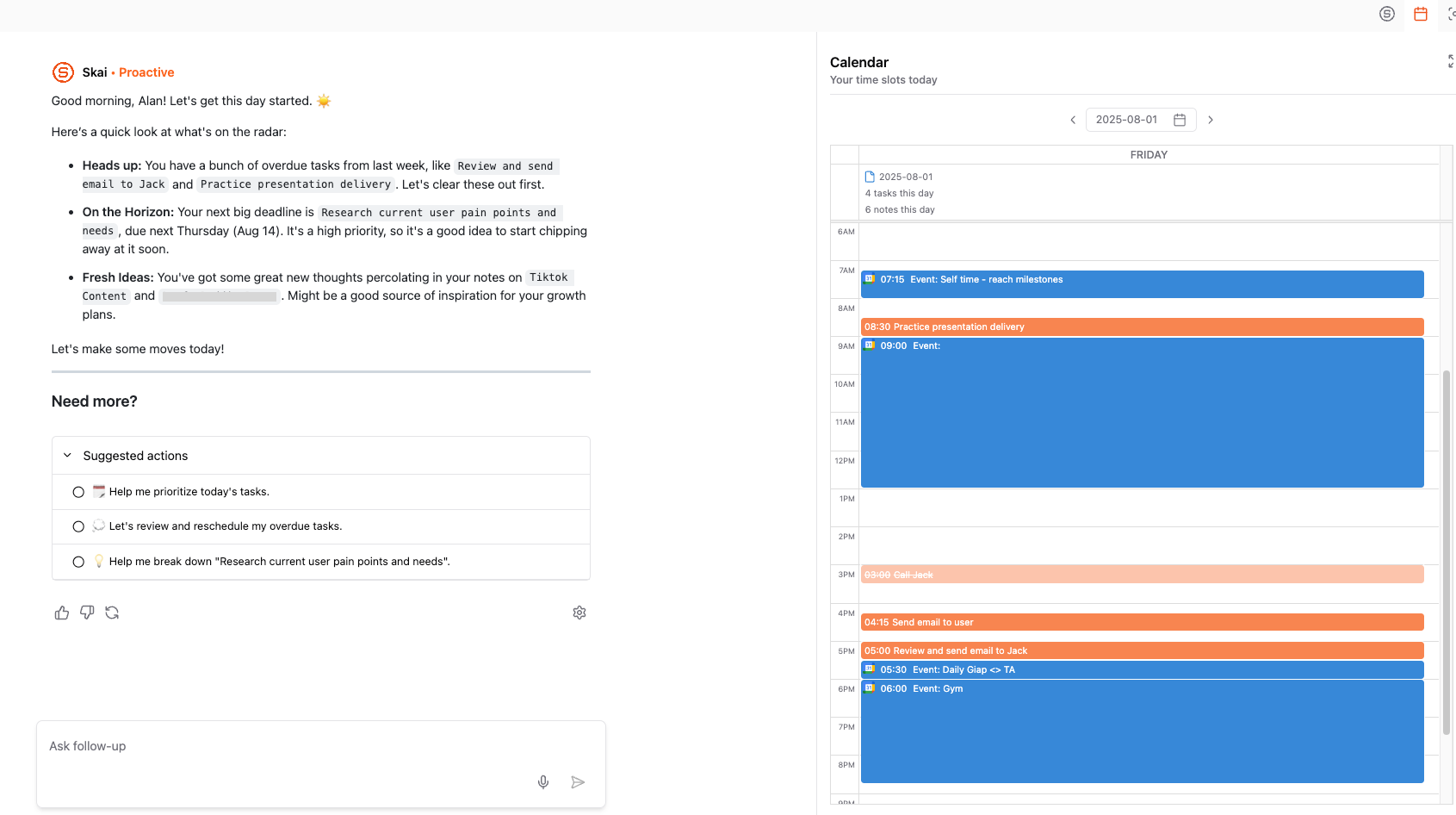
- ⏱️ Proactive reminders & nudges: Saner checks in during the day to keep you focused - no more forgotten tasks buried in your notes.
Why it helps with ruthless prioritization:
Saner does the mental heavy lifting - it filters out low-priority noise, breaks down big tasks, and gives you just the next best thing to focus on.
“It’s like having an executive assistant who knows your brain and keeps you on track, without micromanaging you.”
Bonus: It’s designed with ADHD users in mind, making it perfect if you struggle with overwhelm, task switching, or forgetfulness.
😵 How Does Ruthless Prioritization Prevent Decision Fatigue?
Every unmade decision is a tax on your brain.
By choosing your true priorities upfront, you remove 90% of micro-decisions during the day. That’s more energy for the work that counts.
Strategies that help:
- Batch decisions (e.g. plan priorities weekly)
- Default to templates or SOPs for recurring tasks
- Make “no” your default answer unless a task screams “yes”
🚪 How Do You Say “No” Without Burning Bridges?
Saying no is a skill. Try these respectful, assertive scripts:
- “That sounds great, but I’m heads down on higher-priority work this week.”
- “Let’s revisit this next quarter when I have more bandwidth.”
- “I want to do this justice, and I can’t right now.”
Remember: You’re not rejecting the person. You’re protecting your focus.
📚 Real-World Example: Ruthless Prioritization in Action
Case: CEO of a growing startup
Problem: 70+ tasks per day, constant fire-fighting
Solution:
- Used the 5/25 Rule: Picked only 3 OKRs to focus on
- Delegated hiring to COO
- Cut daily standups to twice weekly
- Used Saner.AI to turn notes/emails into prioritized tasks
Result:
More strategic focus. Less stress. Faster growth.
🧭 Final Thoughts: Prioritize Like Your Life Depends on It (Because It Kind of Does)
Ruthless prioritization isn’t just about productivity. It’s about protecting your energy, your sanity, and your ability to actually do meaningful work.
You don’t need to do more.
You need to do less — better.
Your next step:
- Choose one framework from this guide
- Apply it to your day tomorrow
- Say no to something that doesn’t matter
And feel what it’s like to own your time again.
Related Posts You Might Like:
- How to Be Time Efficient: Master Your Day With Science, Tools, and Habits
- How to Set Daily Goals (+100 Examples Across Topics)
- Best AI Productivity Tools to Simplify Your Workday
- How to Reduce Context Switching (And Get More Done With Less Mental Fatigue)
- Best AI Personal Assistants in 2025
FAQ: Ruthless Prioritization
1. What is Ruthless Prioritization?
Ruthless prioritization is the practice of making hard, deliberate choices about where to focus your time, energy, and resources. It means saying “no” to good ideas so you can say “hell yes” to the few that truly matter. This concept is especially critical for entrepreneurs, executives, and ADHD-prone professionals juggling a million things at once.
Rather than reacting to everything, ruthless prioritization helps you act with intention.
Tools like Saner.AI help automate this mental filtering - so you focus more and stress less.
2. Why is Ruthless Prioritization important?
Without clear prioritization:
- You waste time on low-impact tasks
- You feel overwhelmed by decision fatigue
- You keep switching context and lose momentum
- You rarely move the needle on your most important goals
Ruthless prioritization puts your time back in your control. With support from tools like Saner.AI, you get nudged toward high-leverage actions and avoid the trap of busywork.
3. What tools help with Ruthless Prioritization?
The best tools reduce noise, not add more of it. Here are a few:
- Saner.AI – AI assistant that turns notes, emails, and ideas into prioritized tasks and schedules them for you
It stands out for how it helps you think clearly - by capturing chaotic thoughts, tagging them automatically, and surfacing only what matters now.
4. How do you practice Ruthless Prioritization daily?
Start small with these steps:
- List all your current tasks (even the “maybe” ones)
- Use the 80/20 rule: What 20% will create 80% of impact?
- Kill your nice-to-have: Eliminate anything that’s “nice to do” but not essential
- Ask Saner.AI: “Which of these tasks should I focus on today?”
- Let AI do the lifting: Saner automatically reminds you of what’s high-priority and then actually decided whether to do decides tasks
You don’t need a perfect system - just a tool that keeps your focus where it counts.
5. Can Saner.AI help with Ruthless Prioritization?
Absolutely. Saner.AI is built for it.
Here's how:
- Turns messy rants into clear action steps
- Pulls top-priority tasks from your notes, emails, and calendar
- Suggests what to do next based on your workload
- Reminds you of important items before you forget them
- Helps you say “no” to the unimportant by showing what truly matters
Saner acts like a calm, objective assistant that doesn’t get emotionally attached to your to-do list.
6. What frameworks support Ruthless Prioritization?
Here are a few go-to decision frameworks:
- Eisenhower Matrix – Urgent vs. Important
- Warren Buffett’s 5/25 Rule – List 25 goals, focus only on top 5
- Pareto Principle (80/20) – Double down on high-leverage work
- Kill Criteria – Set rules for what you’ll stop doing
With Saner.AI, you can even ask:
“Of these 10 goals, which 3 are highest impact based on what I’ve been working on?”
The AI uses your context to guide your focus.
7. Is Ruthless Prioritization helpful for ADHD?
More than helpful - it’s essential.
People with ADHD often struggle with task switching, indecision, and mental clutter. Ruthless prioritization gives you a filter. Saner.AI makes it ADHD-friendly by:
- Turning impulsive thoughts into organized tasks
- Surfacing only 1–2 top priorities at a time
- Avoiding the “overwhelm trap” of endless lists
- Keeping your day structured, not chaotic
Saner helps ADHD brains do less - but accomplish more.
8. How do I stop feeling guilty about saying no?
That guilt is real - but misplaced.
When you say yes to everything, you're actually saying no to your highest potential. Ruthless prioritization is about protecting your time for what matters most.
It’s not selfish - it’s smart strategy.
9. Can AI really help you prioritize?
Yes - but only if it understands your context.
Saner.AI doesn’t just react to tasks. It learns from your notes, calendar, emails, and chats to figure out:
- What’s most important right now
- What can wait
- What you’re forgetting
Instead of getting lost in decision fatigue, just ask:
“What should I work on today?”
Saner answers with clarity—based on your actual workload, not just your calendar.
10. Who benefits most from Ruthless Prioritization?
Anyone who juggles multiple priorities. Especially:
- Entrepreneurs – Need to scale impact, not just effort
- Busy professionals – Constant distractions and demands
- ADHD-prone minds – Struggle with focus and follow-through
- Executives – Drowning in decisions and meetings
If you need more clarity and less chaos, ruthless prioritization - powered by tools like Saner.AI - can change your entire workflow.
Prioritize your work and life effectively

